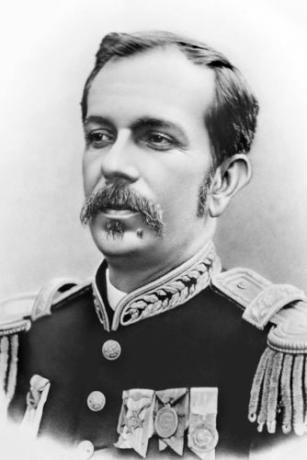THE Meiji Restoration was the process of monarchical restoration which happened in Japan in 1868. The power that was in the hands of the shoguns (military chiefs) was passed on to the Imperial family. From that, a great process of modernization and growth of the Japanese economy was started after years of economic isolation.
shogunate
The power in Japan was in the hands of the shogunate since the 12th century, and the family Tokugawa controlled Japan since 1603. The shogunate was a dictatorial government imposed by the nation's supreme military chief (the shogun). The Tokugawa shogunate had imposed a policy of isolation which prohibited contact with the outside world and closed national ports to foreign vessels. During the period of the shogunate, the Japanese imperial family was under the control of the shoguns.
Japanese isolation was suspended during the 1850s, when the United States began to exert diplomatic pressure on Japan to repeal the isolation policy. As the shogun knew that he had no capacity to face the Western powers, he ended up opening the nation's economy.
The shogun's stance displeased Japan's national elites, who considered foreigners barbaric. The richest manors in Japan (Satsuma and Choshu) started to defend the overthrow of the shogun, the restoration of the monarchy and the expulsion of foreigners. They had as a slogan "sleepy joi", which means: honor the emperor, drive out the barbarians.
Imperial power was only really restored after the Boshin War, which marked the defeat of the troops defending the shogunate.
Modernization of the economy
With the restoration, power in Japan passed into the hands of Mutsuhito, known as EmperorMeiji. The administration of the nation was in charge of bureaucrats, who were largely responsible for the great transformations that took place in Japan.
The bureaucrats intended to break with the old order existing in the shogunate period and promote the integration of elites and the population in general with the new project, which would result in development from the country. Thus, many transformations also took place in Japanese society.
O government extinguished the privilege of landlords (daimyo) about the manors (ha), and the peasants, who used to pay their taxes to the landlords, started to pay their taxes to the government. In addition, the samurai class had government pensions permanently withdrawn and replaced by indemnities with a fixed term of up to fifteen years. American anthropologist Ruth Benedict gives details about these changes:
Barely a year in power, [the regime] abolished the right of taxation of the daimyo [land lord] in all fiefs. He collected the records and appropriated the rate of “40%” for the peasants' daimyo. […] Around 1876, the pensions of the daimyo and the samurai were converted into indemnities maturing in five to fifteen years. Were they small or large, according to the fixed salary of such individuals in the Tokugawa time|1|.
These initial changes generated dissatisfaction among both the elite and the peasants. A rebellion was organized by Saigo Takamori, a samurai dissatisfied with the new government. Furthermore, “between 1868 and 1878, the first Meiji decade, there were at least 190 [peasant] revolts”|2|. However, the new government prevailed and managed to quell all rebellions.
As a way to promote greater national integration to the project imposed from Meiji, the new government unified the japanese language, thus extinguishing the dialect differences that existed. In addition, it carried out Japan's educational reform, making education mandatory. The aim of the teaching was to implement “discipline, obedience, punctuality and a religious respect (adoration) for the emperor|3|.
Emperor worship became known as State Shintoism. The emperor was seen as the incarnation of the sun goddess, Amaterasu. State Shinto also implanted a feeling of superiority in the Japanese, which contributed to the development of a strong nationalist movement in the country.
In the economy, Japan promoted a strong opening to the international market, encouraging the development of entrepreneurship and promoting the development of a base industry, which was responsible for infrastructure development in the country. To make this possible, Japan took inspiration from successful models of the Western powers and sent many Japanese abroad to learn abroad.
|1| BENEDICT, Ruth. The chrysanthemum and the sword: patterns in Japanese culture. São Paulo: Perspectiva, 2014, p.70.
|2| BENEDICT, Ruth. The chrysanthemum and the sword: patterns in Japanese culture. São Paulo: Perspectiva, 2014, p.71.
|3| LANDES, David S. The wealth and poverty of nations: because some are so rich and others so poor. Rio de Janeiro: Campus, 1998, p. 421.
*Image credits: MrNovel and Shutterstock
Take the opportunity to check out our video lesson related to the subject:


